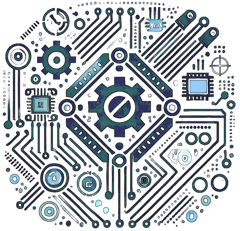Objective
To investigate the effectiveness of power line filters in reducing electromagnetic interference (EMI) in electrical circuits and understanding their operation.
Theory
Electromagnetic interference (EMI) can disrupt the operation of electronic devices, leading to degraded performance or malfunction. Power line filters are used to suppress EMI by attenuating high-frequency noise while allowing the desired power signal to pass through. These filters typically consist of inductors and capacitors arranged in various configurations (low-pass, high-pass, etc.) to achieve the desired filtering effect.
The general transfer function for a low-pass filter can be described as:
H(f) = 1 / (1 + j(f / fc))Where:
- \( H(f) \) = Transfer function
- \( f \) = Frequency
- \( fc \) = Cut-off frequency
No Ads Available.
Components Required
- Power line filter module (commercially available or homemade)
- Oscilloscope
- Function generator
- Multimeter
- Resistors and capacitors (for a homemade filter, if applicable)
- Connecting wires
- AC power source (ensure proper safety measures)
Circuit Diagram
Below is a circuit diagram for connecting the power line filter:
In this diagram:
- The power line filter is connected in series with the AC power supply and the load.
- Ensure proper safety precautions are taken when working with AC voltage.
Procedure
- Set up the circuit on a breadboard or using the power line filter module according to the circuit diagram.
- Connect the AC power source to the circuit and the load (e.g., a light bulb or resistive load).
- Use the function generator to inject a known high-frequency noise signal into the circuit.
- Measure the voltage across the load using the oscilloscope to observe the effect of the power line filter on EMI.
- Record the voltage readings with and without the filter in place to compare the effectiveness of the EMI reduction.
Results
Document your findings in a table format:
| Test Condition | Voltage Across Load (V) | Noise Level (dB) |
|---|---|---|
| Without Filter | ||
| With Filter |
Conclusion
This experiment demonstrates the effectiveness of power line filters in reducing electromagnetic interference in electrical circuits. Understanding the operation of these filters is crucial for designing robust electronic systems that can operate reliably in environments with high EMI.


